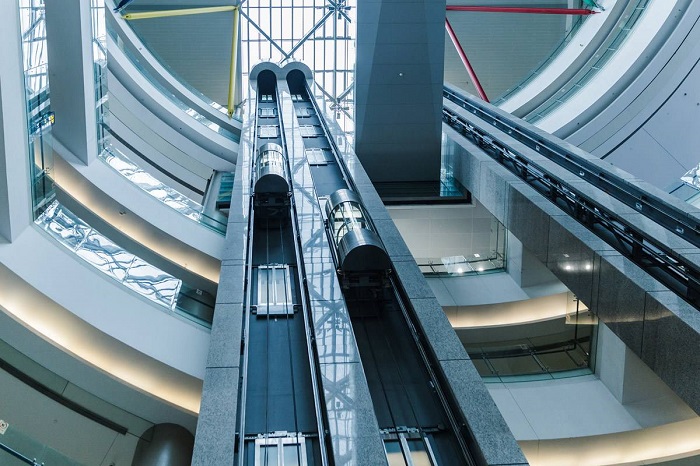With the rapid advancement of urbanization in our country, more and more high-rise buildings are rising from the ground, and elevators have become the most frequently used building facilities, which has greatly promoted the development of the elevator industry.
A set of data from the “2019 China Elevator Market Analysis Report” shows that as of the end of 2019, the number of elevators in my country reached 7 million units, and has continued to grow at an annual growth rate of more than 10%. Among them, car elevators account for 85% and escalators account for 15%.
Driven by both stock and incremental growth, the elevator industry has broad prospects for development in the future. It is predicted that the number of elevators in China will exceed 10 million units in 2023. The so-called dual driving factors refer to: from the perspective of building stock, urbanization and aging promote the updating and installation of elevators in existing buildings; from the perspective of construction increment, elevators have become standard equipment for new houses, and the largest application areas downstream of elevators are Real estate, therefore, is closely related to the real estate boom. The rebound in real estate boosts elevator production.

Elevators are different from cars. Even if a car has many small problems such as a broken wiper, it will not affect the car’s starting and driving. However, if the elevator has a small problem, it needs to be stopped immediately to ensure safety. From our point of view, it seems that elevator safety problems are not uncommon in our daily lives. We can see relevant reports every now and then. If you are a little unlucky, maybe the elevators in the building where you live or the office building where your company is located often have problems. Therefore, it is out of service and under maintenance.
On the one hand, it is the growing market demand, and on the other hand, it is the high elevator failure rate. So, how to find the balance between the two? The elevator Internet of Things may be able to give the answer.
What is elevator IoT?
The elevator Internet of Things is a concept proposed to solve the current elevator safety problems. It includes the data collection part, the data transmission part, the central processing part and the application software, which together constitute a complete elevator Internet of Things monitoring system.
The existing relatively advanced new elevator Internet of Things is to install sensors and cameras in the elevator car, elevator shaft, control room, and other parts of the elevator to detect the operating status of the elevator and the degree of wear of parts, and provide real-time The data is summarized and fed back to the backend and displayed through the platform, thereby realizing real-time and effective supervision and maintenance of elevators by relevant units.
In fact, the development of the elevator Internet of Things has already started as early as 2010. The Elevator Internet of Things has gone through the initial stage of development, the development stage and the mature stage. From the government-led development to the market-oriented operation of system integrators, in addition to elevator factories, property companies and maintenance companies, owner units, operators, etc. are highly involved. A large amount of resources are invested in construction and promotion, and profits are returned to form the elevator industry value chain and generate profit distributors.
Elevator Internet of Things – nothing more than perception, data transmission and data analysis and processing
In the development process of more than ten years, we can see huge changes: from the initial magnet induction, clumsy elevator accompanying cable communication, and tricky RFID cards, to later using external sensors to obtain data, and then later using The black box reads real-time operating data from the elevator control system, various wireless communication protocols (devices), various connection methods, and even smart elevators that integrate big data and artificial intelligence.
In terms of perception, the data categories collected in the early stage were designed with reference to the fault data of the main control board. There is a lot of elevator failure data, but in general, it can be deduced from a small number of data. A small number of data, including door opening and closing, leveling, power outage, upper and lower limits. No matter how many sensors are used to collect data, what is collected is actually the real-time status data of the elevator operation. Of course, the more this kind of status data, the better. The more feedback there is on the elevator’s operating status, the more accurate it will be. But the problem is that the more sensors, the higher the cost. In addition, the installation and maintenance costs of the sensors will also incur greater costs.
In terms of data transmission, with the increasing popularity of smart terminals and sensing devices and the rapid development of big data, mobile communications have evolved from the mobile Internet to the Internet of Everything. The upgrade of the existing elevator IoT platform only requires the replacement of the front-end transmission module and adaptive modification of the data interface of the software platform. The upper-layer application of the platform does not need to make any changes to quickly and smoothly complete the conversion and transition of the transmission protocol.